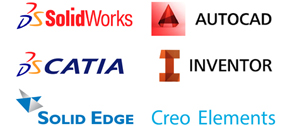People who buy Apple products are among the most fanatical consumers in the world. (After all, consumers don't camp out for days to buy new cars or clothes.) So it isn't surprising that one fan set out to erect a photographic shrine to every single Apple product ever created, from the Apple I computer in 1976 to the iPad mini.
Four years ago, Jonathan Zufi, a 42-year-old Australian native, began buying up more than 500 products: desktops, Apple's first commercial printer and iPods—some in vintage packaging. He rented a storage unit to hold all the goods. He built a studio in the basement of his Atlanta home to photograph them, placing each item carefully against the same type of futuristic white backdrop used on apple.com and in Apple stores. He got a photography professor to help him learn to take professional shots.
"I wanted to create a repository where people who also love the company and its products could go and reminisce," says Mr. Zufi, a mobility expert at SAP America Inc. who says he has never worked for Apple Inc. The idea, he says, was to trace the company's evolution both in electronics and design from a user's point of view. "I want people who are a bit younger who think Apple just makes things that start with "i" to know this company used to make clunky printers."
The result is a collection of more than 150,000 photos, some 3,500 of which Mr. Zufi displays on a website (www.shrineofapple.com) and more than 650 of which he has curated into a new 326-page coffee-table-sized book. "Iconic: A Photographic Tribute to Apple Innovation," is self-published and available at www.iconicbook.com.
A paean to the evolution of the personal computer and a company that changed consumer behavior, it looks like the kind of book Apple itself might market—except that the company has long been adamant about focusing on the future rather than celebrating its past. Apple even donated its old hardware, papers, and other historical materials to Stanford University in 1997.
Representatives from Apple didn't respond to requests for comment about the project.
Unlike many other books about Apple, Mr. Zufi's consists of photos and little text. There is a circuit board from the original Apple computer, the Apple I, which "now seems as primitive as the Model T," writes Daniel Kottke, one of the company's original employees, in an introduction to a chapter on desktops.
There's the Apple II, circa 1977, one of the first successful home computers, and a Macintosh prototype in a transparent case—which Mr. Zufi says illustrates co-founder Steve Jobs' obsession with making computer electronics fit a particular design. There's a "Flower Power" iMac G3, known for its brightly-colored plastic bubble-shaped design, and an Apple Lisa 2, which was a commercial failure. There are digital cameras and joysticks. There's also an entire chapter on packaging—another Apple design obsession.
Along the way, Mr. Zufi met with collectors around the country, loading dusty collections of valuable prototypes into rental cars and photographing them, sometimes in makeshift studios in hotel rooms. He convinced Apple co-founder Steve Wozniak to contribute a foreword to the book. In an email, Mr. Wozniak said Mr. Zufi included equipment that few would even know about, including Mr. Wozniak himself. The work "blows me away," he said.
Mr. Zufi says his original goal of shooting every Apple product will be impossible to meet. "I am still finding out about products they dabbled with, released in limited numbers in specific markets, and so on," he says.
While he has emptied the storage unit and sold most of the items he bought, about 15 remain, including an enormous monitor in his garage, he says.
Write to Betsy McKay at betsy.mckay@wsj.com
via apple - Google News http://news.google.com/news/url?sa=t&fd=R&usg=AFQjCNFfAem6n1KCaEc8aH5lf7y6HvMYTA&url=http://online.wsj.com/article/SB10001424052702303464504579107543820263888.html













0 comments:
Post a Comment